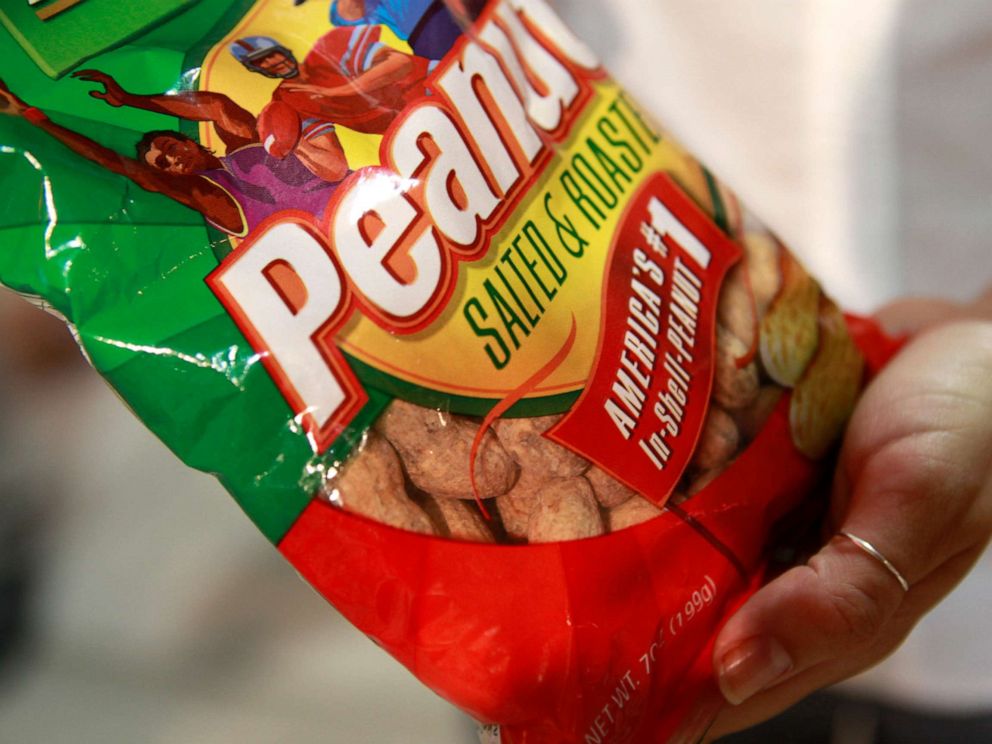
“Having a peanut allergy is a big deal for a little kid,” said Giuliana Ortega, a 4-year-old girl with a wavering voice and a peanut allergy, as her mom held her up to the microphone.
Giuliana talked about sitting at a separate lunch table in the school cafeteria and “having two friends instead of 20.”
“It means feeling different all the time,” she continued.
Even an accidental exposure to peanuts can be deadly for children with severe allergies. Giuliana’s mom talked about how scary those accidental exposures were.
This is why many citizens, doctors, industry specialists and regulators’ eyes were trained on an FDA Advisory Committee hearing Friday. The drug Palforzia, a daily oral pill that can help kids with peanut allergies avoid life-threatening reactions to small amounts of peanut, was given the green light, which will help with the formal approval process in January 2020. Experts voted that the drug was effective 7 to 2 and was safe 8 to 1.
This pill will not “cure” or remove a peanut allergy.

The new peanut allergy pill is considered to be part of a group of drugs called oral immunotherapy (OIT). “Oral immunotherapy is used to help desensitize someone to the food they are allergic to. It involves starting with ingesting a very small amount of the allergen, and slowly increasing the exposure over time,” Dr. David Stukus, Associate Professor of Pediatric Allergy at Nationwide Children’s Hospital, told ABC News.
“By raising the threshold of peanut that would trigger an allergic reaction, patients potentially could have none or milder symptoms than what they could have had without treatment. So there potentially could be an extra layer of protection,” Dr. Julie Wang, a professor of pediatric allergy at Icahn School of Medicine, said in an interview with ABC News.
Information about Palforzia comes from a study published in the New England Journal of Medicine in late 2018. In the study, two-thirds of children with peanut allergies on medication passed a food challenge with peanuts, compared to 4% of children who didn’t receive the medication.
The drug developer, Aimmune, filed paperwork with the FDA seeking approval for children 4 to 17 years old.
“Philosophically, this medication is going to re-write medical textbooks,” Jason Dallas, CEO of Aimmune, said in an interview with ABC News.
While the company has not decided on pricing, “Payers really, really like the efficacy of this product, they will cover it,” Dallas said.
However, several questions linger. What is the endpoint? Could a patient safely stop taking their daily medication and still expect protection?
“An indefinite course is required to maintain protection. There are ongoing studies to assess if less than daily dosing will maintain protection,” Wang said.
Taking a daily medication, potentially for the rest of their lives, is not an ideal solution for most kids.
“The dose of the allergen and the route of the allergen matters,” Dr. Stephanie Leonard, Associate Clinical Professor of Pediatric Allergy at the University of California at San Diego, said in an interview with ABC News.
Both the dose and route of peanut allergen exposure are actively under investigation.
A study published Thursday used more than 10 times the dose of peanut protein in Palforzia. When using the higher dose “there was a much stronger effect — 85% of participants after two years were tolerating eight nuts,” says Dr. Alkis Togias, Branch Chief of Allergy, Asthma, and Airway Biology at the National Institute of Allergy and Infectious Diseases, in an interview with ABC News.
“Palforzia is a lower dose of allergen, so it protects against a lower dose,” Togias added.
There are other routes of exposure under investigation. A study published last week explored a liquid peanut protein to be absorbed in the mouth.
“There are pros and cons with each of the therapies. In one comparison with oral pills, the liquid was found to have a better safety profile, but did not seem to work as well in reducing allergies” Leonard said.
There is also a skin patch under investigation. “When you compare pills to the patch, the patch has a good safety profile and is an easy therapy. Patients place the patch on the back of their arm, and then they leave it there,” Leonard said.
While this exciting research continues, Stukus reminds parents that “about 1 in 5 children with peanut allergies will acquire tolerance to peanuts naturally over time.”
In the meantime, he encourages peanut-allergic patients to stay vigilant for symptoms of an allergic reaction because “symptoms can range and change over time. They can include itching, red raised rash called hives, swelling, vomiting, and wheezing.”
Stukus added: “Half the time for people having a life-threatening allergic reaction to food, they do not use their epinephrine soon enough. Epinephrine is the only appropriate treatment for this serious reaction.”
Both Drs. Julie Wang and Stephanie Leonard were involved with Palforzia research. Drs. Stukus and Togias were not. Dr. Sejal Parekh is a pediatrician in San Diego, working in the ABC News Medical Unit.
Source: Read Full Article